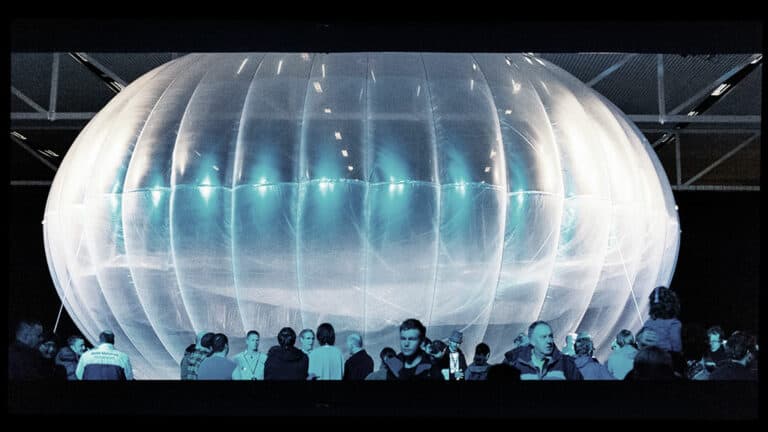A new startup is building on the technology that Google used to launch internet balloons to the edge of space.
Alphabet subsidiary Google has an innovative past. The tech giant tried to filter drinking water from air, dreamed of generating energy with kites and designed an elevator to space.
Until 2021, Google directed Loon, a project that set out to replace internet cables with air balloons. The project was cancelled after nine years of development. Several prototypes were successful, but the cost of balloon internet proved too high for commercial success.
The cancellation was a blow to the team, but the technology won’t go to waste. Alphabet recently announced an heir to Loon’s data and patents. Aalyria, a brand new startup, will build on the technology to produce laser communication services.
Aalyria
Aalyria successfully developed ways of transporting data with lasers. The startup set out to connect devices at enormous distances without local transmission towers or cables. The concept is similar to that of Google Loon, but instead of hot air balloons, Aalyria uses lasers.
Two projects are central to the company: Tightbeam and Spacetime. Tightbeam is a laser communication system for data transfers between stations and endpoints. Spacetime is a software program for automating network traffic. Alphabet has shares in Aalyria, but the startup isn’t an official subsidiary.
Tightbeam and Spacetime
The basis of Spacetime was developed by Google Loon. The software used to estimate the movement of internet balloons to maintain connectivity between balloons. Meanwhile, Spacetime predicts where a laser should be aimed to connect moving objects like planes and boats.
Spacetime is already being sold to customers. Aalyria expects to offer Tightbeam in a service starting next year. The system allows connections in locations that are unfavourable for cables and masts, including remote rivers and mountainous areas. According to Aalyria, its laser connections are 100 to 1,000 times faster than the fastest long-distance alternatives available today.
Laser communications
Project Taara, an earlier laser communications project by Alphabet, utilised lasers to connect remote regions in Africa to the internet. The team indicated that laser connections are resistant to light rain, haze and birds, but emphasized that Africa’s climate is favourable for laser communications. Results may vary by region and continent.
Aalyria claims its technology supports a variety of weather conditions and climates. The startup hopes to compete with SpaceX. The satellite company transmits radio waves from space stations to connect planes, ships and homes. Aalyria uses lasers, but the principle is the same.
Aalyria currently consists of 26 employees. Although only time can tell whether the company is able to convince the market, the startup seems well on its way: Aalyria recently closed a €8.7 million deal with the US Department of Defense.
Tip: Sony builds lasers to venture into space
Image: by iLighter – Flickr: Google Loon June 2013, CC BY 2.0
